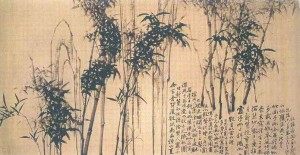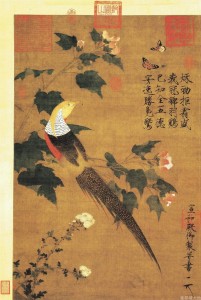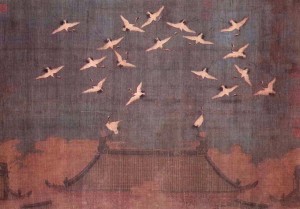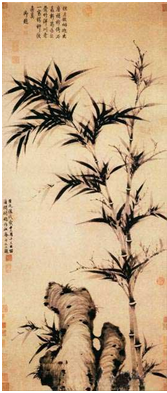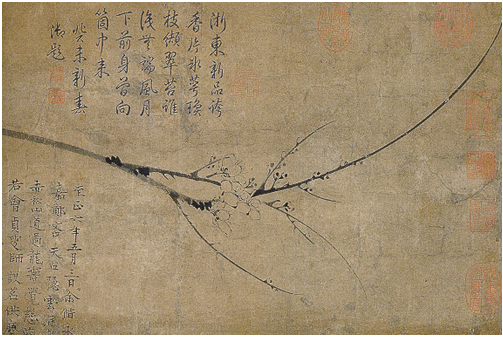郑燮的山水画
郑燮的这张山水画很漂亮、很安静。画里有很多竹子。 有的竹子是长的、有的竹子是短的。画中在竹子后面的背后像是一座山。画大半是黑色和咖啡色的。你可以看到一些汉字,虽然我看不懂,可是我觉得这张画很好。
1693年,郑燮在江苏出生。虽然他的家没有钱,他还是成为了一名学者。后来成为了扬州八怪之一。他的画是画一般竹子、兰花和石头。我选这张画因为它给了我一个很好的印象。我爱让人安静的画。
这幅画让人看到很多竹子。我不知道画中画的是哪里、但是我觉得很高兴、很安静。那天的天气好象很好、风景很漂亮。我也好像看到孩子们在附近的竹子里玩游戏。有些孩子可以爬后面的山。当我走过去,我笑了,因为我看到一些熟悉的朋友。我很高兴地看到我的朋友,我们可以一起在那儿跑步和到处游览。
This is a beautiful, peaceful Zheng Xie landscape painting. The painting has lots of bamboo. Some of the bamboo is tall; some of the bamboo is short. The painting seems to have a mountain in the background of the bamboo. The painting is mostly black and brown. You can see lots of Chinese characters (I don’t know what they mean), but I think the painting is very good.
Zheng Xie was born in 1693 in Jiangsu. Although his family was born, he became a scholar. However, he changed jobs, and became one of the Eight Eccentrics of Yangzhou. His paintings are generally of bamboo, orchids and stones. I chose this painting because it gave me a very good impression. I love peaceful paintings.
As I walk, I can see lots of bamboo. I don’t know where I’m going, but I feel happy and peaceful. Today’s weather is very nice, the landscape is beautiful. I can see children playing in the bamboo. Some of the kids are climbing up the mountain, with smiling faces. As I walk past, I smile. Then finally, I see some familiar friends. I’m so happy to see my friends. I can start running or looking around with my friends.

